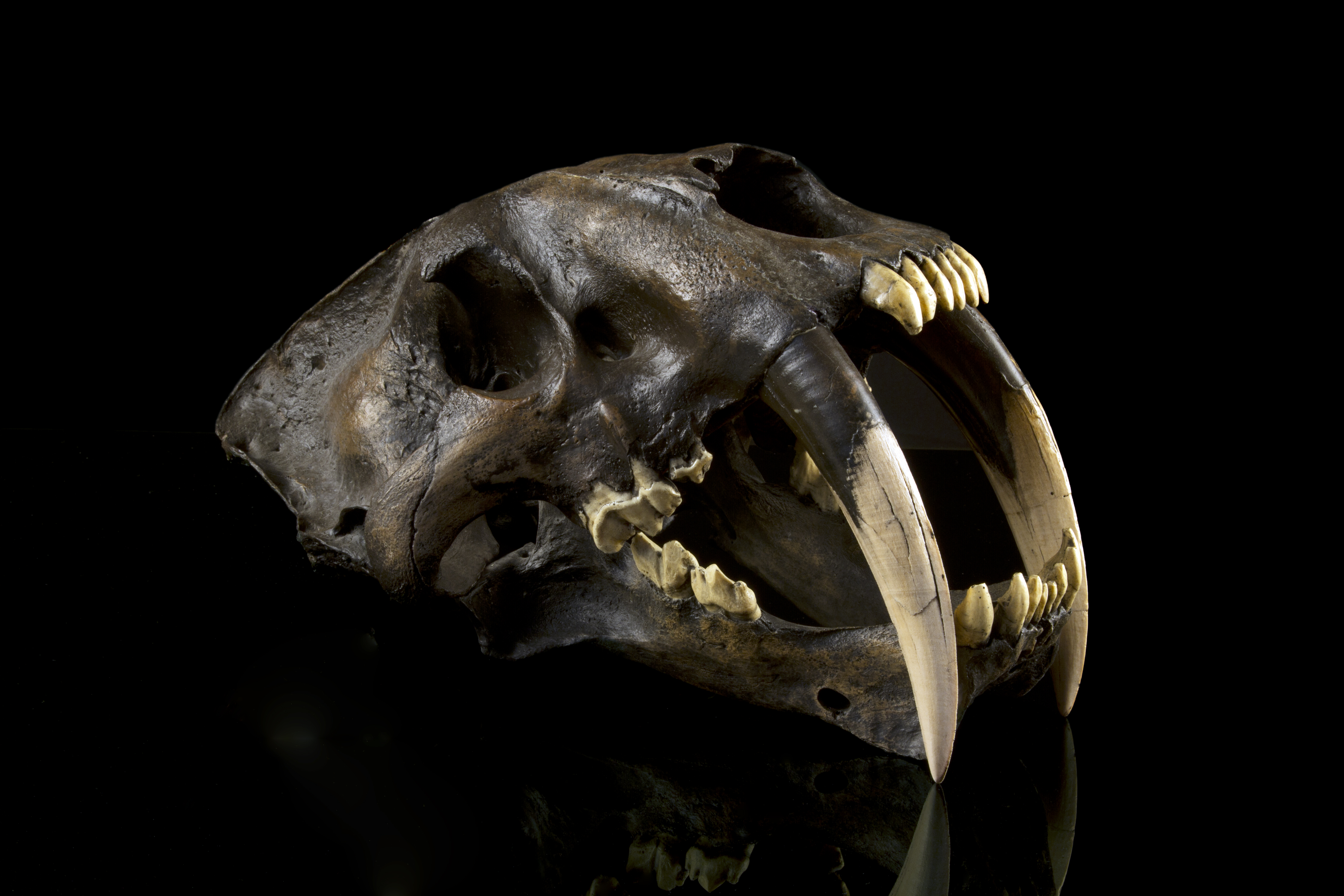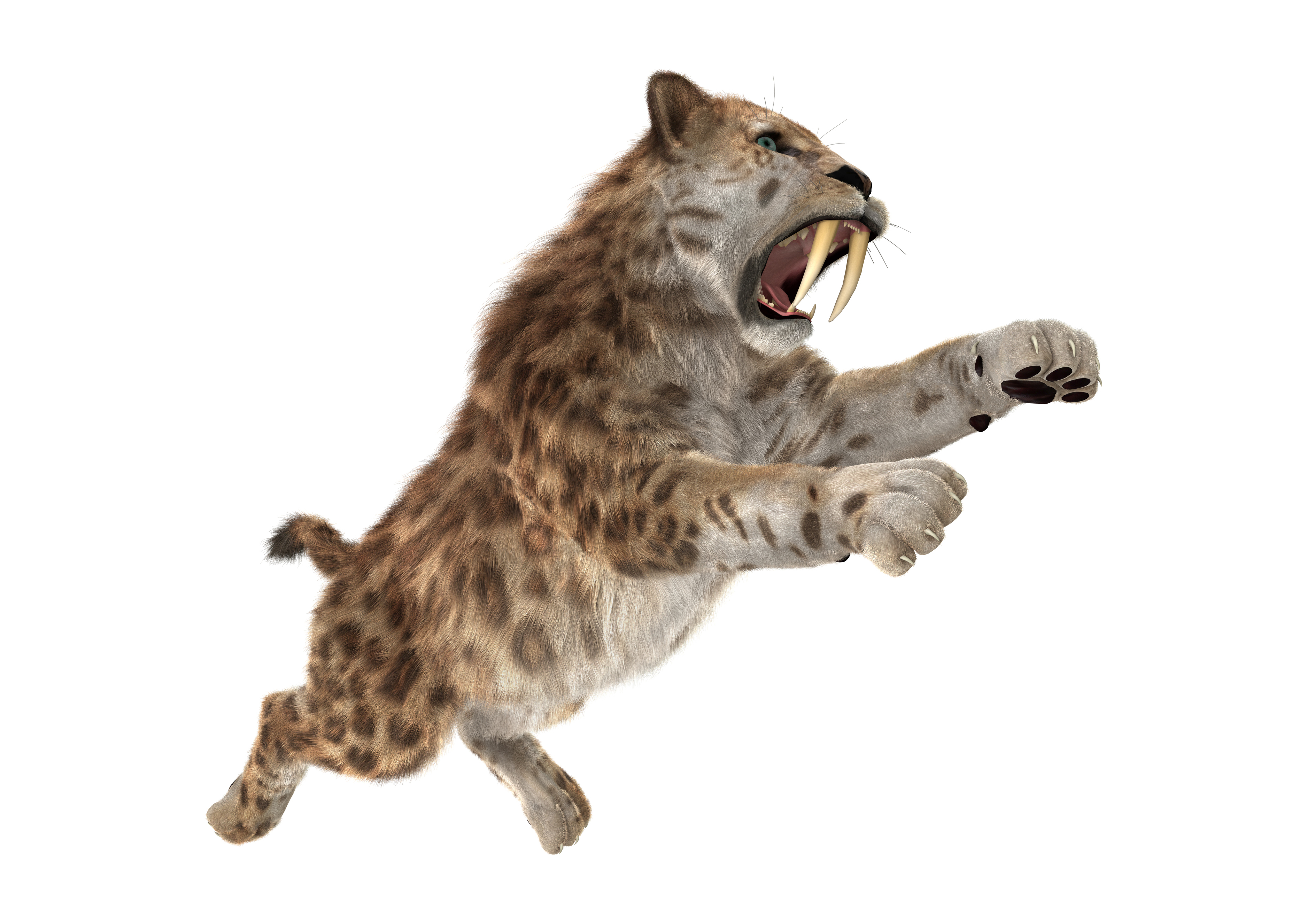Did you know California has a state fossil? That’s right, and it is the Sabertoothed Cat.
Why the Sabertoothed Cat?
Technically the Smilodon californicus, this species is the most famous California Ice Age fossil. It was one of the last surviving members of a long ancestry of formidable felines called sabertoothed cats.
Those Famous Teeth

The sabertooths had exceedingly long upper canines, those saber-like fangs that we all
recognize. These teeth were used for stabbing and slicing.
As a result of developing large dagger-like canines in the upper jaw, the skull of the sabertoothed cat was quite different from that of modern cats. Naturally, the cat’s lower teeth were correspondingly smaller. The lower jaw of the sabertoothed cat could swing to almost a right angle when opened to attack.
However, the biting strength of the lower jaw was not as great as it is in today’s cats.
Same Size as Today’s Lion, But a Very Different Hunter
The body and limbs of the sabertoothed cat were approximately the same size as the present-day African lion.
The sabertoothed cat's hind legs were relatively light while the front limbs, rib basket, and breastbone were strong and powerful. With shorter lower legs, this cat was not a swift-footed hunter like today’s lion or tiger. Instead it preyed on slow-moving mammals such as mammoths, mastodons, and ground sloths.

Once it caught one of these giant mammals, the sabertoothed cat probably gripped the prey with its powerful front legs and, while using its “saber teeth” and strong head and neck muscles to repeatedly stab a vulnerable spot on the victim's body.
Presumably, the backward position of the nasal openings allowed the sabertoothed cat to continue breathing while its head was buried inside its prey. And, a strongly grooved gum covering the ridges of the cat’s hard palate may have aided in sucking blood.
Era of the Sabertoothed Cats
The carnivorous sabertoothed cats, extinct members of the cat family Felidae, flourished throughout North America 40 to 35 million years ago --from the late Eocene and early Oligocene -- until the close of the Pleistocene Epoch, about 11,000 years ago.
In California, the cat's fossilized remains are found most abundantly at the Rancho La Brea pits in Los Angeles.
Here the sabertoothed cat, attracted by the cries of struggling creatures caught in the sticky pools of oil and tar, hunted the prey stuck there, but in turn fell into the tar trap.
Extinction and Official State Fossil Designation
The extinction of the sabertoothed cats may have been related to the decrease in larger animals upon which it preyed. There is some evidence that the mastodon was the favorite victim of some later-day species of sabertoothed cats, because both persisted in North America only until the end of the Pleistocene. In Europe, however, both disappeared in the early Pleistocene.
